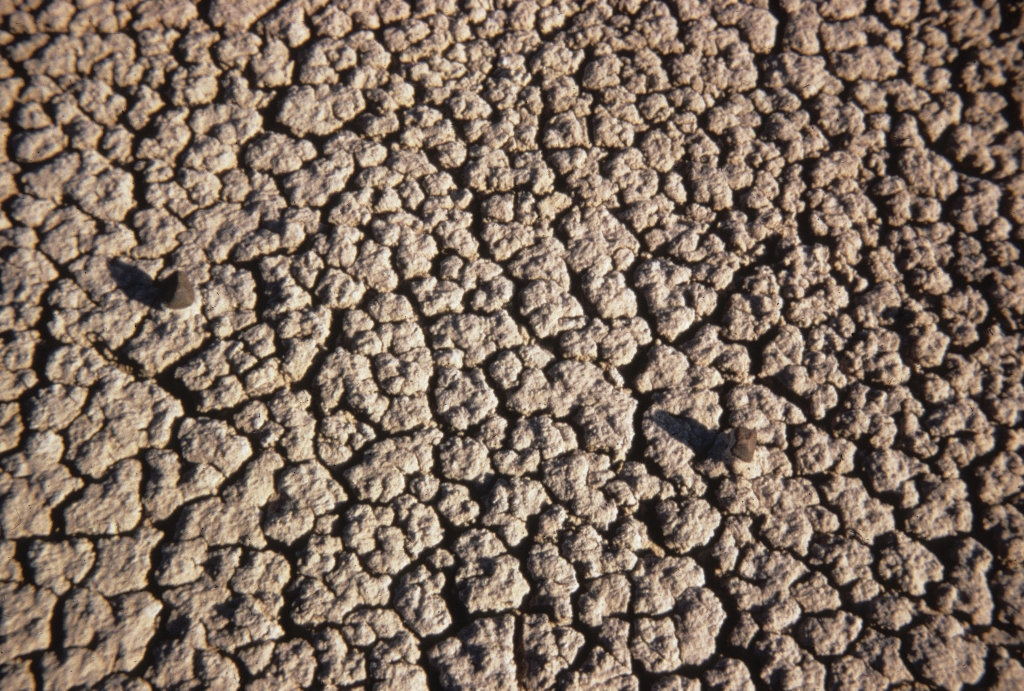
Notice the sediment on either side of the trail. Fifty-Five million years ago, volcanoes in the Rockies spewed out ash that blew east. At that time, this area was a vast, tropical swamp. The ash settled in wet areas and became bentonite clay.
Bentonite looks like popcorn when dry, but becomes sticky, slick mud when wet. It can absorb up to five times its weight in water. Known as the mineral of one thousand uses, it is used to seal landfills and ponds, to make cat litter, and much more.
Stay to the left to continue on the guided nature trail. Take the right on the cutoff trail to avoid a section of trail with very steep stairs. You will rejoin the guided nature trail near post #11.
Bentonite looks like popcorn when dry, but becomes sticky, slick mud when wet. It can absorb up to five times its weight in water. Known as the mineral of one thousand uses, it is used to seal landfills and ponds, to make cat litter, and much more.
Stay to the left to continue on the guided nature trail. Take the right on the cutoff trail to avoid a section of trail with very steep stairs. You will rejoin the guided nature trail near post #11.
Is there something we missed for this itinerary?
Itineraries across USA

Acadia

Arches National Park

Badlands

Big Bend

Biscayne

Black Canyon Of The Gunnison

Bryce Canyon

Canyonlands

Capitol Reef

Carlsbad Caverns

Channel Islands

Congaree

Crater Lake

Cuyahoga Valley

Death Valley

Dry Tortugas

Everglades

Gateway Arch

Glacier

Grand Canyon

Grand Teton

Great Basin

Great Smoky Mountains

Guadalupe Mountains

Haleakalā

Hawaiʻi Volcanoes

Hot Springs

Indiana Dunes

Isle Royale

Joshua Tree

Kenai Fjords

Kobuk Valley

Lassen Volcanic

Mammoth Cave

Mesa Verde

Mount Rainier

North Cascades

Olympic

Petrified Forest

Pinnacles

Rocky Mountain

Saguaro

Shenandoah

Theodore Roosevelt

Virgin Islands

Voyageurs

White Sands

Wind Cave

Yellowstone

Yosemite

Zion